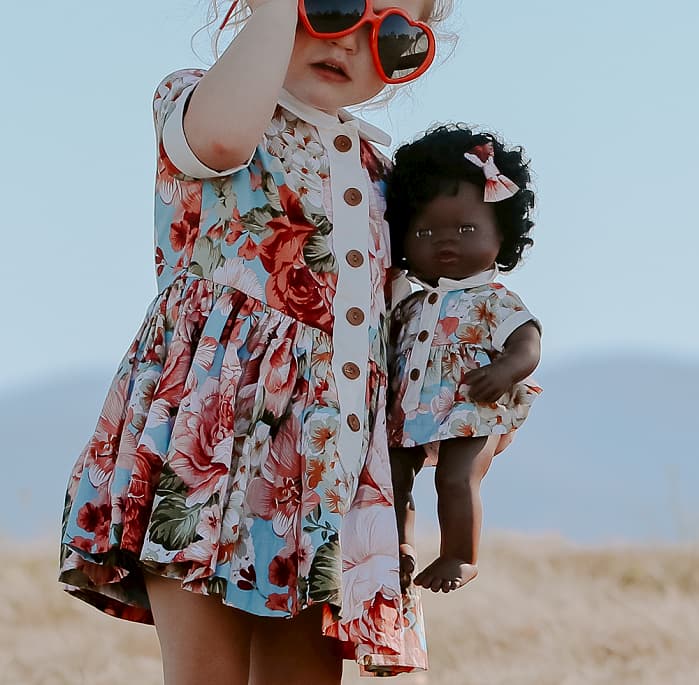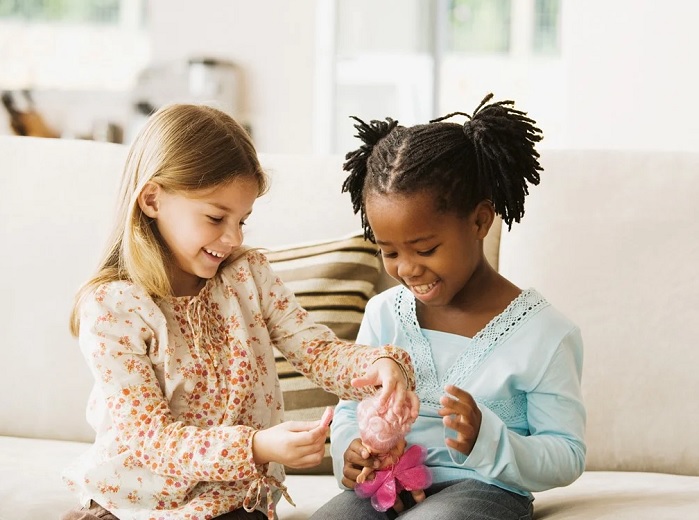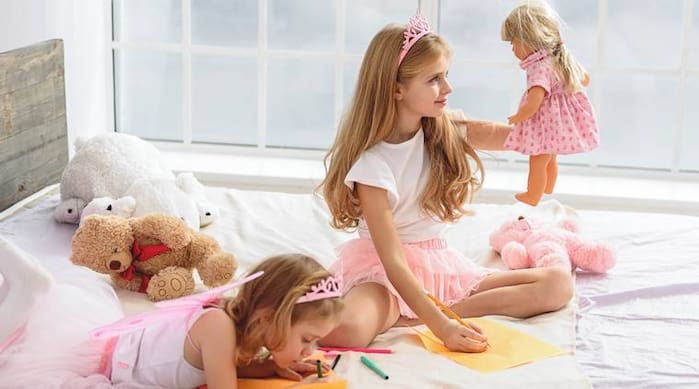Childhood is a magical time when children learn some of the most important lessons about themselves and the world around. There are many reasons to pay close attention to the lessons you teach your children from a young age as they’re going to stay with them for the rest of their lives.
You may teach your children important skills in many ways, but when they’re very young, they learn best through play. Educational toys are great for mastering new skills while still having fun. And some of the first educational toys children encounter are usually dolls. Even though dolls aren’t necessarily designed to be educational they open up a whole new world of possibilities for kids. Throughout engaging in imaginary play with dolls, they become more ready for real life. And these are some of the things they learn.

Source: Thelaneandco.com
Responsibility
One of the main things children learn when playing with dolls is responsibility. Your child will learn how to take care of a doll (have her diapers changed, learn her how to sit on a potty, feed her, change her baby doll clothes, put her to bed). By practising those scenarios, children will be more confident to care for their younger siblings.
You can also go a step further and task your child with the responsibility to choose appropriate dolls clothes. By doing so, you can allow your child to express her/his own taste in clothes better. You can also use this opportunity to teach them that some types of clothes are more suitable than others. For instance, when it’s cold, it’s best to pick knitted doll clothes that will keep their little baby warm. This can help to overcome any problems that your child may have with wearing certain types of clothes.
Fine Motor Skills
As pretend play usually takes place from 12 – 18 months, your child will take the initiative to dress up a doll. This is a time for toddlers to start developing fine motor skills, and dressing dolls is a great way of doing so. Learning to fasten the snaps, zippers, laces and buttons on the baby doll clothing can help toddlers develop better manual dexterity. Additionally, by practising on small doll clothes, children can move more easily to learning how to self dress independently. Speaking of which.

Source: Motherandbaby.co.uk
Self-Dressing
As the child practices pulling dolls clothing over the doll’s head and arms, he/she will learn the basics of dressing. Of course, you’ll need to assist by showing him/her the armholes and neck opening to the top and the easiest way to pull up pants. Once children break down the science of dressing into small, straightforward steps, it will be easier for them to try it on themselves.
When dressing dolls, it’s good advice to use dolls and dolls clothes that your child can relate to as being of a similar age. This will give your child an idea of how to organise dressing, and around the age of 4 – 5, he/she might be able to get dressed independently.
Socialisation
Playing with dolls can teach your children basic social skills as well. By making their dolls interact with each other, children learn how people should communicate, a polite way of saying things and solutions to problems when the same arise in real life.
When children see other kids playing with dolls, they might feel more connected and are more likely to come over and start playing together. This is a great way of direct socialisation and everything kids learn through playing with dolls, they will start using in a real-life situation.
Empathy
From playing with dolls children learn how to be empathetic with other people. Children care for their dolls. As such, they develop feelings towards their dolls while playing, and that will help them to develop and understand feelings towards another person or animal better. Ensuring your child has empathy for others will help make them a more considerate person, providing they’ll end up being kind and caring.

Source: Indianexpress.com
Language
It’s never too early to start teaching language, and that might be a native language or even a language of other cultures.
Make sure you start with the native language first by introducing simple words. It’s a good idea to have a dollhouse that features a lot of different rooms and furniture, family members (dolls) and pets so you can point out and say the word loud and your child can repeat. Have different dolls if you want to teach your child about different cultures and languages.
Basic Math Skills
You guessed it! Math is much more fun when you have your favourite doll as a teacher. Or, to memorise something simple such as addition and subtraction, have a few dolls and put them next to one another to show how adding one to another makes them two. It’s the same logic for subtraction. There are also classroom doll sets with chalkboards you may buy, or improvise with what you already have.
Dolls, if used properly, can teach children important lessons over the course of their young lives. It’s good to use this advice and help your children reach their potential.












